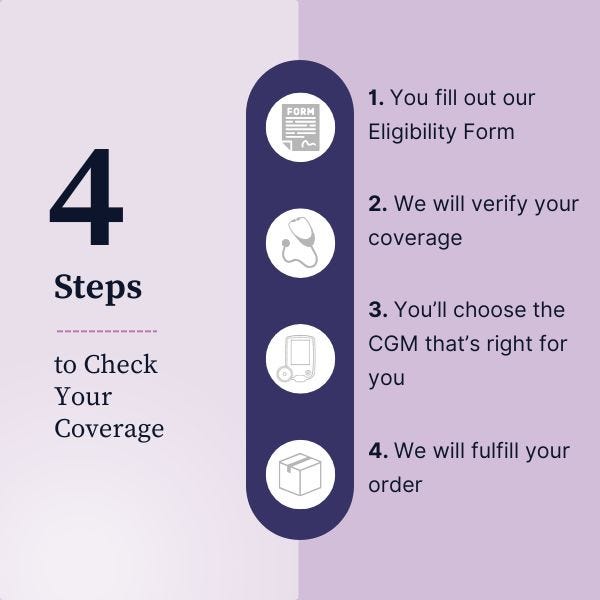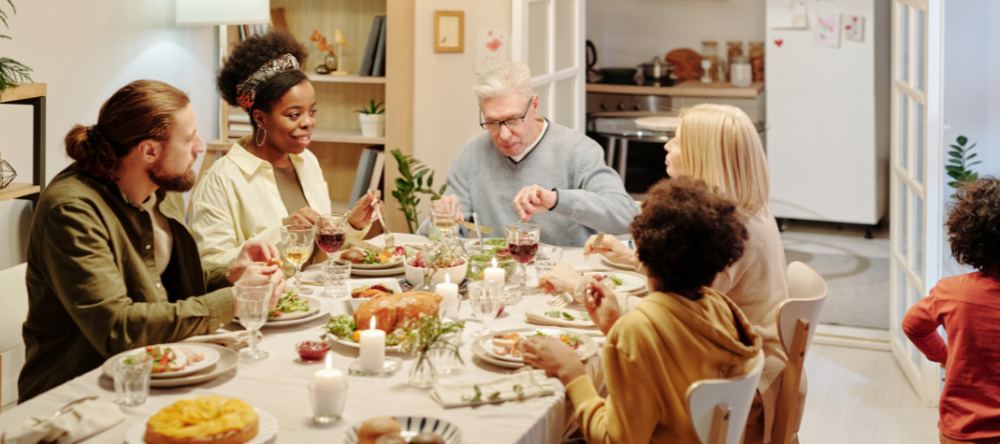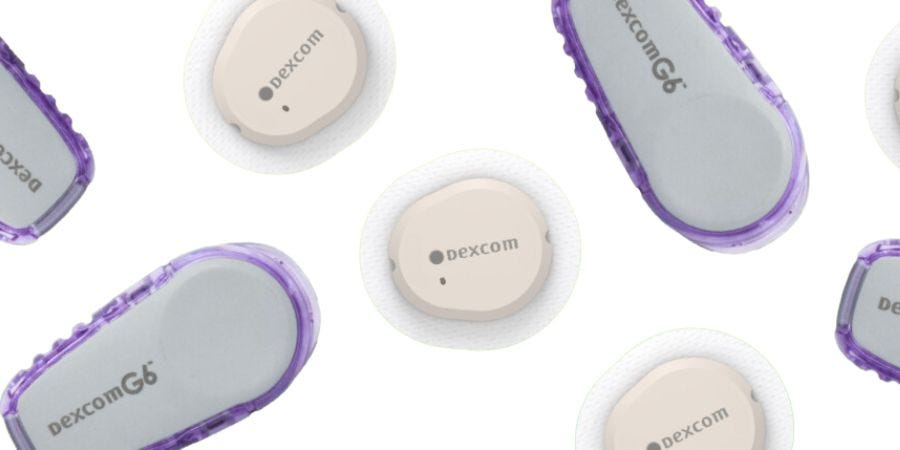Key Takeaways:
-
A successful grocery trip for those with type 2 diabetes starts with a well-thought-out plan. Focus on whole, unprocessed foods like lean proteins, high-fiber carbs, and nutrient-dense vegetables to maintain balanced blood sugar levels.
-
Opt for healthier alternatives. It’s best to avoid processed items, sugary snacks, and refined carbs, which can spike blood sugar.
-
Keep food labels in mind and take notice of things like hidden sugars or sodium.

We all know the feeling; wandering the aisles of the grocery store, knowing we need to leave with enough of the right kinds of ingredients to make balanced meals for the next few days, but sometimes it's hard to know what that means. But for those with type 2 diabetes, healthy meal planning can be extra daunting. People with diabetes must also factor in the effect these meals will have on their blood sugar levels.
We’ve put together a downloadable, printable grocery list for those with type 2 diabetes- full of healthy foods, the full range of food groups, and the right kinds of carbs. Healthy eating doesn’t mean a diet full of bland, low calorie, low-flavor foods. In fact, with the right recipes, it can mean a satisfying, flavorful, diverse meal plan that will set you up for success in managing your diabetes or prediabetes.
Foods to Include On Diabetes Grocery Shopping List
Proteins
Lean meats are a good source of protein and will not affect glucose for diabetics. Steer clear of red and processed meats, or chicken with skin and overly processed foods like some prepared meals. Buying plain, unprocessed foods to prepare at home is always the safest bet. For seafood lovers, the American Diabetes Association recommends eating certain kinds of fish twice per week, particularly fish with Omega-3 fatty acids.
-
Chicken
-
Turkey breast
-
Fish with healthy fats (salmon, tuna, sardines, mackerel, anchovies, herring)
-
Eggs
-
Tofu and tempeh (watch for high sodium levels)
Carbohydrates
The key to buying healthy carbs when you live with type 2 diabetes is to avoid simple carbohydrates like white bread, white rice, refined pasta, highly processed sugary cereals and snacks like pretzels and chips. Opting for high-fiber carbs like whole wheat bread and products made with whole grain flour will help you feel fuller longer and avoid a dangerous increase in your blood glucose levels.
-
Barley
-
Brown rice
-
Quinoa
-
Steel-cut oats
-
Whole grain bread
-
Whole grain cereal (watch for added sugars)
-
Popcorn
Legumes
Legumes, while they do contain carbohydrates, are also high in fiber and protein, making them a diabetes superfood that can keep you full and satisfied. They are low on the glycemic index and the extra fiber means that fewer total carbohydrates are absorbed by the body. Cooking with canned beans can save time, but be sure to rinse them thoroughly with water to reduce the amount of sodium, or buy the low sodium or salt free variety.
-
Black beans
-
Chickpeas
-
Kidney beans
-
Lentils
-
Navy beans
-
Pinto beans
Fruits
Fruits contain carbohydrates and fructose, which can raise your blood glucose levels, but that doesn't mean they should be eliminated from your diabetes diet altogether. Fruit contains essential vitamins, minerals and phytochemicals which may lower your risk for heart disease and high blood pressure. It also contains fiber, which will help make you feel full and aid in weight loss goals. Be sure to watch your portion sizes, focus on fresh fruits over packaged, and read food labels carefully if you do buy packaged fruits, looking for terms like 'no added sugars'.
-
Apples
-
Apricots
-
Avocados
-
Berries (blackberries, blueberries, strawberries, raspberries)
-
Cherries
-
Citrus (grapefruit, oranges, lemon, lime)
-
Peaches
-
Pears
-
Tomatoes
Veggies
Nutrient-dense, high-fiber vegetables are the foundation of a healthful diet for everyone, not just diabetics. Vegetables can be mixed into a variety of dishes beyond salads, including soups, stews, veggie burgers and patties. It's a good idea to keep some raw veggies on hand for snacks as well. They can be separated into two categories: non-starchy vegetables that are lower in carbohydrates and starchy vegetables that are higher in sugar. Non-starchy vegetables should make up fully half of your plate, if you follow the Diabetes plate method. Be sure to limit your serving size when it comes to starchy vegetables.
Non-Starchy Vegetables
-
Asparagus
-
Bell peppers
-
Broccoli
-
Brussels sprouts
-
Cauliflower
-
Celery
-
Green beans
-
Leafy greens (kale, arugula, spinach, collards)
-
Mushrooms
-
Onions
-
Zucchini and other squashes
-
Beets
-
Carrots
Starchy Vegetables
-
Peas
-
Pumpkin
-
Sweet potatoes
Dairy Products
Dairy products like yogurt and prepackaged smoothies are notorious for sneaking in lots of added sugars, so be sure to check the food labels carefully. These items can be purchased plain or unsweetened and sweetened at home naturally with fruit for a healthful alternative. Plus dairy products are rich in magnesium, calcium, and potassium. It’s important to keep in mind that choosing low-fat varieties reduces the risk of heart disease due to the lower amount of saturated fat.
-
Low-fat cottage cheese
-
Low-fat milk
-
Low-sodium cheeses
-
Low-sugar yogurt (regular or Greek)
Dressings, Oils, & Spreads
Stay away from foods high in saturated and trans fats, which can increase cholesterol, and stick with healthy fats when loading up your cart with foods in this category.
-
Almond butter
-
Canola oil
-
Extra virgin olive oil
-
Guacamole (check for added sugars and sodium)
-
Hummus
-
Low sodium soy sauce
-
Olive oil-based salad dressing
-
Mustard
-
Peanut butter
Desserts
Even desserts aren't off limits for those with type 2 diabetes. Just make sure to consume in moderation and to avoid the high-sugar ice cream, cookies and pastries that line the shelves of most grocery stores and coffee shops, opting for treats like sugar free ice cream and gelatin or dark chocolate. You can get creative with ingredients that are naturally sweet like fresh fruit and sweet potatoes. You can also enjoy desserts sweetened with alternative sweeteners like stevia and erythritol (though erythritol and other sugar alcohols may cause digestive issues in some people, so use in moderation until you know how your body will react.)
Having diabetes doesn’t have to mean never enjoying dessert. There are several safe and tasty diabetes-friendly dessert recipes at your fingertips. Opting for desserts with balanced ingredients including healthy fat or lean protein will help to mitigate a glucose spike.
Beverages
Plain old water is the most healthful beverage for diabetics, and everyone else, but that doesn't mean there aren't other options. In recent years, the beverage section of the grocery store has exploded with choices for unsweetened, low calorie, sparkling and fruit-flavored waters. Add in your tea and coffee for that caffeine fix, and you'll find you have plenty of safe beverage choices nowadays. Like with everything else on the list, just check for added sugars.
-
Sparkling water
-
Iced or hot tea, unsweetened
-
Coffee, unsweetened
-
Vegetable juice
Disclaimer
Information provided on the Aeroflow Diabetes blog is not intended as a substitute to medical advice or care. Aeroflow Diabetes recommends consulting a doctor if you are experiencing medical issues or concerns.
We all know the feeling; wandering the aisles of the grocery store, knowing we need to leave with enough of the right kinds of ingredients to make balanced meals for the next few days. But for those with type 2 diabetes, healthy meal planning can be extra daunting. Diabetics must also factor in the effect these meals will have on their blood sugar levels.
It all starts with a reliable game plan that will ensure you have what you need on hand to maintain a regular eating schedule with appropriate portion sizes. This way you won’t risk running low on diabetes-friendly foods and making impulsive, possibly unhealthy food choices. We’ve put together a downloadable, printable grocery list for type 2 diabetes full of healthy foods, the full range of food groups, and the right kinds of carbs. Healthy eating doesn’t mean a diet full of bland, low calorie, low-flavor foods. In fact, with the right recipes, it can mean a satisfying, flavorful, diverse meal plan that will set you up for success in managing your diabetes or prediabetes.
Be sure to plan for enough time to read food labels. Shop the outer edges of the store first, where the refrigerated and fresh produce sections are. The interior shelves often house the highly processed foods that contain added sugars and sodium. And don’t forget to eat before you head out! This is a good habit to get into for everyone, diabetes or not. You’ll be much less likely to grab the quickest, easiest options, like grab-and-go meals, many of which are not the best foods for our health.











